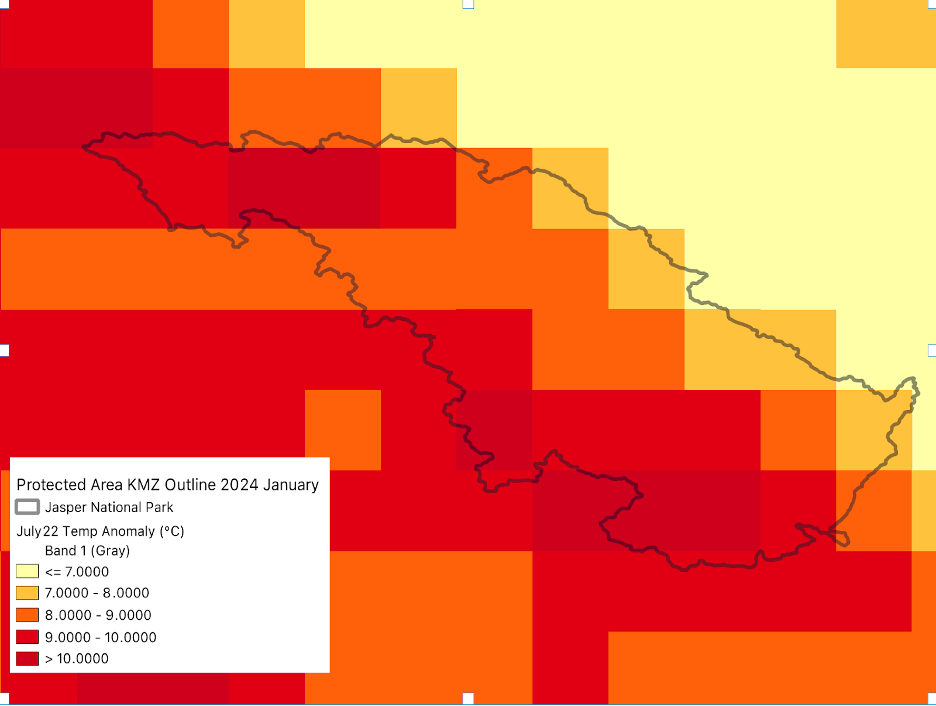The sustained above-average temperatures in Jasper in the week before the July wildfires started were at least two times more likely because of climate change, according to an analysis from researchers at Climate Central.
“We saw really abnormally high temperatures for the week leading up to the fire in that area. But we also saw really high Climate Shift Index scores,” said Kaitlyn Trudeau, senior research associate with Climate Central.
The Climate Shift Index (CSI) is a system developed by Climate Central that uses data models to quantify the influence of fossil-fuel driven climate change on average daily temperatures. The CSI scale of climate change impact on daily temperature ranges from -5 to +5. In Jasper, the unusually high temperatures were between two and five times more likely for a sustained period, Trudeau said.
“When you have really high temperatures like that, it dries out the landscape. It dries out the potential fuel, and it makes the fuel really hot. So, the ignition temperature doesn't have to heat up much more to ignite when a fire does start,” she said.
Temperature anomalies across the Jasper National Park ranged from about 7C to 10C on July 22, when the fire is believed to have started, according to Climate Central’s research.
Fire weather refers to the conditions that make wildfires likely, and includes temperature, humidity, and wind speed. Fire weather conditions have been increasing throughout western North America, and specifically in western Canada, Trudeau said.
“We're seeing these conditions more frequently, and it really primes the landscape for more extreme fire behaviour,” she said.
These prolonged hot and dry periods act as threat multipliers for wildfires, she said. Drought conditions make forests more susceptible to disease or infestations, and they also limit the tools available to adequately manage forests.
Prescribed burns are used to thin out dead trees in crowded forests and reduce the fire hazard in those areas. Parks Canada has been using these monitored fires in Jasper since 1996. As periods of fire weather become more intense, the window of time where it is safe to conduct prescribed burns shrinks, Trudeau said.
“When it comes things like prescribed burning, which is important to address our mistakes in the past, our history of fire suppression in all these places, you really don't want to have fire weather conditions. Because those are the exact kind of conditions that make it extremely dangerous to start a fire, even a prescribed, monitored fire. These kinds of conditions, as they increase, are not only increasing our risk of more extreme wildfires, they are also reducing our capacity to do things like prescribed burning and prevent them in the future,” she said.
“Unless we address carbon pollution, we are going to continue to see these more extreme conditions that basically set us up for larger fires that are going to cost more money, they're going to put more communities at risk, and put more people's lives at risk.”




